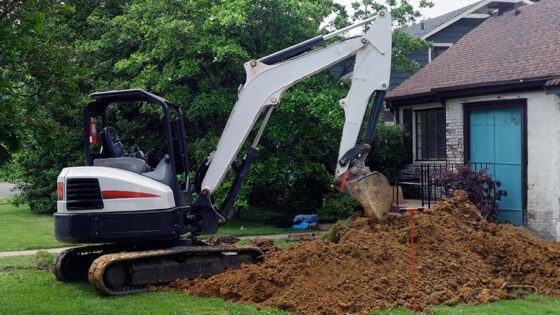
If the North Carolina Department of Transportation is the agency condemning your land, this offer will usually be sent as Form 10-B: “Summary Statement/Offer to Purchase Real Property.” This form breaks down “just compensation” (their estimate for how much you’re owed) into six categories:
Value of right of way to be acquired:
The “right of way” is the area of land that the condemning agency is buying to build a road or other project on. This doesn’t necessarily mean that a road or building will cover the land they’re purchasing. Oftentimes the condemning agency may purchase extra land to act as a barrier on the sides of the road, or they may plan on building more at some point in the future. However, you’re giving them complete ownership of the land, and the value assigned here should equal 100% of the value of the land taken. Property owners and the government do not always agree on what the value of the land is, and if you believe the amount in this category may be low, click here to find out if an eminent domain attorney agrees with you.
Value of permanent easements to be acquired:
A “permanent easement” means the condemning agency is not purchasing your land entirely, but is buying the rights to alter it in some way. There are a variety of permanent easements: slope, drainage and utility easements are the most common. A permanent slope easement is the right to alter and maintain the elevation of a property owner’s land in the easement area. A permanent drainage easement is the right to alter and maintain the property owner’s land in order to facilitate drainage of the project; usually by digging ditches or installing pipes. A permanent utility easement is the right to construct and maintain certain utilities (generally power, sewer, or water lines) on a property owner’s land.
For all of these, a property owner still owns the underlying land, but is no longer allowed to use the land in any way that would interfere with the easements. Further, if a property owner builds a fence, plants landscaping, etc. in an easement area after the taking, the condemning agency wouldn’t have to pay the owner for these improvements. Property owners and the condemning agency often disagree on the value of these easements. Plus easements may affect your property’s use and resale value, and should not be granted lightly.
Value of temporary easement (Rental of land) To be acquired:
A “temporary easement” means the condemning agency is leasing a portion of your land for the length of time needed to complete the project. Generally this is a temporary construction easement. The property owner will get back full ownership of this land at the end of the project. However, it is sometimes hard to predict how long a project will take to complete. An owner shouldn’t accept a low value for this easement just because it is temporary. A temporary easement that comes within a few feet of a home can be just as disruptive to an owner as a permanent easement hundreds of feet from their house.
Value of improvements to be acquired:
Improvements are upgrades to the land. Improvements can include wells, septic systems, landscaping, trees, fences, walkways, driveways, sheds, and many other items. The condemning agency will often depreciate the value of the improvements; essentially stating the improvements are worth less now than when you bought them, and paying you less because of it. A property owner should carefully consider which improvements are being taken and their value, to make sure they are getting just compensation for them.
Damages to remainder:
“Damages to the Remainder” sounds pretty straightforward, but can be difficult to determine. Essentially this is the difference in price of your property immediately before the taking, and immediately after the taking, discounting for the value of right of way, easements, and improvements that are being purchased separately. This value is often an area of contention between property owners and the condemning agency as each side may disagree as to both before and after values. Hiring the right kind of independent appraiser may help ensure these values are determined accurately.
Total offer:
The total offer line is the combined value of the right of way, easements, improvements, and damages. Despite the title, the total offer may not always be the condemning agency’s total first offer. In cases where the condemning agency is taking an owner’s land but leaving a small portion, an unusable remnant, the agency may be willing to purchase the remaining land from the homeowner. If this is the case, then in Section “C” of the form, there will be a second total offer value.
This second total offer amount can confuse some property owners: who would expect two separate value amounts both called a total offer? The first total offer is the condemning agency’s offer of just compensation for what it absolutely requires for the project. The second total offer, which includes a value for the remnant, is the agency’s offer of just compensation both for what is required for the project, and for the extra land they are willing to buy to make the process slightly easier on a property owner. The property owner is not required to sell the remnant to the condemning agency.
And despite these both being called “total offers,” the government may be willing to give you more for your property if you can prove its value.
Proving the true value of your property
Before you settle, think carefully about the offer. Your land is your investment and it may be worth more – maybe even a lot more – than the government is offering.
If you think your property might be worth more, click here to ask an experienced attorney’s opinion or call us at 1-877-393-4990. The evaluation is free and could make a significant difference on how much you receive for your land.


